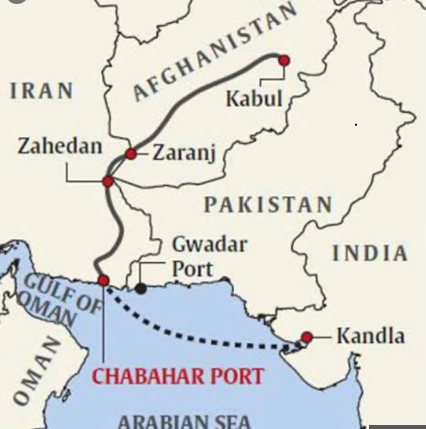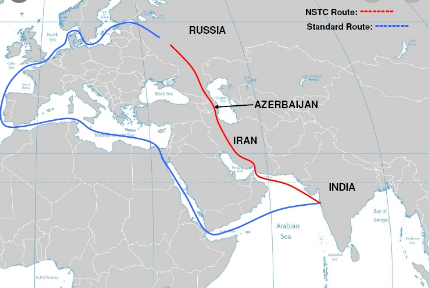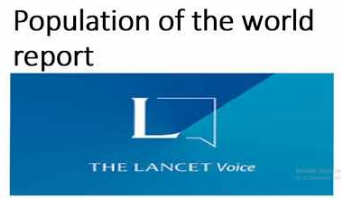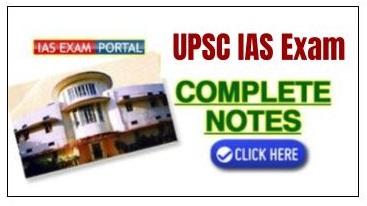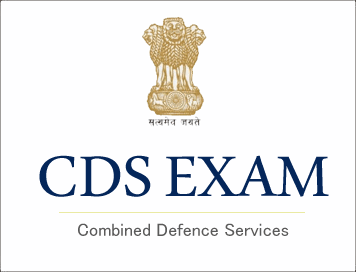
(Final Result) UPSC Combined Defence Services Examination (II), 2019
The following are the lists, in order of merit of 196 (106+76+14) candidates who have qualified on the basis of the results of the Combined Defence Services Examination (II), 2019 conducted by the Union Public Service Commission in September, 2019 and SSB interviews held by the Services Selection Board of the Ministry of Defence for admission to the 149th (DE) Course of Indian Military Academy, Dehradun; Indian Naval Academy, Ezhimala, Kerala and Air Force Academy, Hyderabad (Pre-Flying) Training Course i.e. No. 208F(P) Course.
2. There are some common candidates in the three lists for various courses.
3. The number of vacancies, as intimated by the Government is 100 for Indian Military Academy [including 13 vacancies reserved for NCC ‘C’ certificates (Army Wing) holders], 45 for Indian Naval Academy, Ezhimala, Kerala Executive (General Service)/Hydro [including 06 vacancies reserved for NCC ‘C’ Certificate holders (Naval Wing)] and 32 for Air Force Academy, Hyderabad [03 vacancies are reserved for NCC ’C’ Certificate (Air Wing) holders through NCC Spl. Entry].
4. The Commission had recommended 2699, 1592 and 0611 as qualified in the written test for admission to the Indian Military Academy, Indian Naval Academy and Air Force Academy, respectively. The number of candidates finally qualified are those after SSB test conducted by Army Head Quarters.
5. The results of Medical examination have not been taken into account in preparing these lists.
6. Verification of date of birth and educational qualifications of these candidates is still under process by the Army Headquarters. The candidature of all these candidates is, therefore, Provisional on this score. Candidates are requested to forward their certificates, in original, in support of Date of Birth/Educational qualification etc. claimed by them, along with Photostat attested copies thereof to Army Headquarters /Naval Headquarters /Air Headquarters, as per their first choice.
7. In case, there is any change of address, the candidates are advised to promptly intimate directly to the Army Headquarters /Naval Headquarters /Air Headquarters.
8. These results will also be available on the UPSC website at http://www.upsc.gov.in. However, marks of the candidates will be available on the website after declaration of final result of Officers’ Training Academy (OTA) for Combined Defence Services Examination (II), 2019.
9. For any further information, the candidates may contact Facilitation Counter near Gate ‘C’ of the Commission’s Office, either in person or on telephone Nos.011-23385271/011- 23381125/011-23098543 between 10:00 hours and 17:00 hours on any working day.
INDIAN MILITARY ACADEMY
|
SR.NO.
1
|
ROLL NO
0817809
|
NAME
SURESH CHANDRA
|
|
2
|
1104404
|
PARVESH KUMAR
|
|
3
|
3502185
|
JATIN GARG
|
|
4
|
4900254
|
AYUSH SANWADIA
|
|
5
|
0804631
|
DEEPANSHU TOMAR
|
|
6
|
0813755
|
ANIL GODARA
|
|
7
|
0805176
|
SHAURYA AHLAWAT
|
|
8
|
1201002
|
ASHUTOSH DIGARI
|
|
9
|
0806956
|
MADHUSUDAN BANSAL
|
|
10
|
1101684
|
RAHUL KUMAR YADAV
|
|
11
|
0602487
|
MD ANISUR RAHMAN
|
|
12
|
1101124
|
DEEPAK KUMAR
|
|
13
|
0101693
|
ANIKET SINGH CHARAN
|
|
14
|
1500113
|
SUBHAM PANDEY
|
|
15
|
0402810
|
ASHUTOSH TRIPATHY
|
|
16
|
1102300
|
SAURAV KUMAR
|
|
17
|
2602401
|
KAANAD WANCHOO
|
|
18
|
0401467
|
AYUSH TIWARI
|
|
19
|
0806305
|
AMANDEEP KAPOOR
|
|
20
|
2604161
|
ASHISH TOMAR
|
|
21
|
1300437
|
PEEYUSH
|
|
22
|
1900097
|
VANDHANAN GEORGE PHILIP K
|
|
23
|
1102065
|
SUMIT BHADALA
|
|
24
|
0808236
|
AMIT RAJ
|
|
25
|
1102114
|
VIKAS CHOUDHARY
|
|
26
|
0807867
|
NAMAN SHARMA
|
|
27
|
0505425
|
AMIT PATEL
|
|
28
|
0809491
|
KETAN SINGH
|
|
29
|
0812276
|
INDERJEET
|
|
30
|
0820143
|
BHUPENDRA SINGH MEHRA
|
|
31
|
0300080
|
RAHUL SHARMA
|
|
32
|
0502243
|
DHAIRYA SANKHLA
|
|
33
|
1201294
|
ABHIVIRAJ PILLAI
|
|
34
|
0300312
|
VAMSHI E
|
|
35
|
0808946
|
GAURAV SHARMA
|
|
36
|
3502960
|
ROHIT KUMAR
|
|
37
|
0801883
|
TIRATH KUMAR
|
|
38
|
0506041
|
VAISHAMPAYAN SIDDHARTH GIRISH
|
|
39
|
0602373
|
MAYUKH CHAKRABARTY
|
|
40
|
2603375
|
PRIYANSHU YADAV
|
|
41
|
0301321
|
VAISHAKH CHANDRAN
|
|
42
|
1200981
|
SAMEER ASTHANA
|
|
43
|
3503835
|
RISHABH SHARMA
|
|
44
|
0808354
|
GAURAV KUMAR
|
|
45
|
0400007
|
PRATHAM CHOUDHARY
|
|
46
|
0813142
|
BIJENDRA SINGH TOMAR
|
|
47
|
0300122
|
SAVANI ABHISHEK AJAYKUMAR
|
|
48
|
0816180
|
SHUBHAM SINHA
|
|
49
|
0820901
|
PUSHPAK DHAMI
|
|
50
|
0400715
|
SANIDHYA SINGH
|
|
51
|
0506377
|
P S GAUTAM
|
|
52
|
0805332
|
JATIN NANDAL
|
|
53
|
4200052
|
DEEPAK KUMAR SINGH
|
|
54
|
0200826
|
ABHISHEK KUMAR
|
|
55
|
0503484
|
SHINDE VARAD SAMPAT
|
|
56
|
0402379
|
ANUPAM NEEKHARA
|
|
57
|
0502705
|
PATIL YASHODEEP MANOHAR
|
|
58
|
1104799
|
SAURABH RAINA
|
|
59
|
3400616
|
ROHAN UPPAL
|
|
60
|
0501169
|
ADITYA RAMESH MACHALE
|
|
61
|
0301062
|
M KRISHNA
|
|
62
|
3400328
|
NITIN KUMAR DOGRA
|
|
63
|
0800369
|
PRANJAL SHARMA
|
|
64
|
0506375
|
VISWANTHAN S
|
|
65
|
1102811
|
VISHWAJEET SINGH
|
|
66
|
3502475
|
NAVJOT KUMAR
|
|
67
|
0811017
|
PULKIT AGGARWAL
|
|
68
|
3900560
|
PRASHANT MISHRA
|
|
69
|
0505909
|
PRIYAMVAD RAI
|
|
70
|
1900132
|
DOLINS MH LENIN
|
|
71
|
1400143
|
CHETAN RAJ SINGH BORA
|
|
72
|
0809508
|
HARSHIT JAIN
|
|
73
|
0804144
|
MOHIT SINGH
|
|
74
|
0803020
|
SHAURYA GAUR
|
|
75
|
0820000
|
RAHUL MALIK
|
|
76
|
1401194
|
ROBIN SINGH
|
|
77
|
1900197
|
SAURAV KUMAR SINGH
|
|
78
|
3503477
|
HARMANJOT SINGH
|
|
79
|
3501258
|
JASHANPREET SINGH
|
|
80
|
0805184
|
DEVENDRA KUMAR
|
|
81
|
1402535
|
SHUBHAM RAWAT
|
|
82
|
0100755
|
HARSH DESWAL
|
|
83
|
0804132
|
VIDIT
|
|
84
|
0500093
|
BHOSALE HRISHIKESH DILIP
|
|
85
|
3504317
|
TARUN PATHAK
|
|
86
|
3400306
|
ANMOLDEEP SINGH
|
|
87
|
3502105
|
MOHIT RUHIL
|
|
88
|
3400711
|
VISHAL KUMAR VERMA
|
|
89
|
0301445
|
NAVAAL JAYESH RAI
|
|
90
|
0811202
|
KUSHAL JINDAL
|
|
91
|
0600234
|
DHRUPAD SUHALKA
|
|
92
|
0809649
|
AATIF IQBAL SIDDIQUE
|
|
93
|
5100134
|
NELLI SATWIK
|
|
94
|
3400973
|
MANIK SHARMA
|
|
95
|
0813316
|
PRASHANT KUMAR
|
|
96
|
0504183
|
GAURAV SALASKAR
|
|
97
|
0503559
|
SIDDHANT KOTNALA
|
|
98
|
1100825
|
PRAVEEN DHAKA
|
|
99
|
0821406
|
ANMOL SINGH
|
|
100
|
0818443
|
VIRAT BAKSHI
|
|
101
|
0802375
|
AMAN KUMAR
|
|
102
|
1402760
|
RAVINDRA SINGH
|
|
103
|
3500533
|
ROHIT SANGWAN
|
|
104
|
0101274
|
AKSHAY ARUN TIWARI
|
|
105
|
1502019
|
NIKHIL KUMAR
|
|
106
|
0504559
|
SAHIL SHARMA
|
INDIAN NAVAL ACADEMY :
|
S.R.NO.
1
|
ROLL NO.
0805176
|
NAME
SHAURYA AHLAWAT
|
|
2
|
1201002
|
ASHUTOSH DIGARI
|
|
3
|
0806956
|
MADHUSUDAN BANSAL
|
|
4
|
1101684
|
RAHUL KUMAR YADAV
|
|
5
|
0602487
|
MD ANISUR RAHMAN
|
|
6
|
1102300
|
SAURAV KUMAR
|
|
7
|
2602401
|
KAANAD WANCHOO
|
|
8
|
1300437
|
PEEYUSH
|
|
9
|
0807867
|
NAMAN SHARMA
|
|
10
|
0505425
|
AMIT PATEL
|
|
11
|
1201294
|
ABHIVIRAJ PILLAI
|
|
12
|
0808946
|
GAURAV SHARMA
|
|
13
|
3502960
|
ROHIT KUMAR
|
|
14
|
0401436
|
UDBHAV DAYAL
|
|
15
|
0501066
|
SANAT GUPTE
|
|
16
|
0813949
|
CHANCHAL KUMAR
|
|
17
|
1100806
|
ABHIMANYU DHAKA
|
|
18
|
0300122
|
SAVANI ABHISHEK AJAYKUMAR
|
|
19
|
0816180
|
SHUBHAM SINHA
|
|
20
|
0400715
|
SANIDHYA SINGH
|
|
21
|
0300341
|
YASH KAUSHAL
|
|
22
|
0506377
|
P S GAUTAM
|
|
23
|
0503484
|
SHINDE VARAD SAMPAT
|
|
24
|
0402379
|
ANUPAM NEEKHARA
|
|
25
|
0502705
|
PATIL YASHODEEP MANOHAR
|
|
26
|
0501169
|
ADITYA RAMESH MACHALE
|
|
27
|
0301062
|
M KRISHNA
|
|
28
|
2401580
|
ABHAY S KUMAR
|
|
29
|
3400328
|
NITIN KUMAR DOGRA
|
|
30
|
0800369
|
PRANJAL SHARMA
|
|
31
|
0506375
|
VISWANTHAN S
|
|
32
|
1102811
|
VISHWAJEET SINGH
|
|
33
|
0811017
|
PULKIT AGGARWAL
|
|
34
|
3900560
|
PRASHANT MISHRA
|
|
35
|
0502031
|
VERMA VIGNESH MAHAVIRSINGH
|
|
36
|
0809508
|
HARSHIT JAIN
|
|
37
|
1401194
|
ROBIN SINGH
|
|
38
|
1900197
|
SAURAV KUMAR SINGH
|
|
39
|
3503477
|
HARMANJOT SINGH
|
|
40
|
3501258
|
JASHANPREET SINGH
|
|
41
|
0805184
|
DEVENDRA KUMAR
|
|
42
|
1402535
|
SHUBHAM RAWAT
|
|
43
|
0100755
|
HARSH DESWAL
|
|
44
|
0500093
|
BHOSALE HRISHIKESH DILIP
|
|
45
|
3400306
|
ANMOLDEEP SINGH
|
|
46
|
0301445
|
NAVAAL JAYESH RAI
|
|
47
|
2400958
|
ARJUN M
|
|
48
|
0600234
|
DHRUPAD SUHALKA
|
|
49
|
5100134
|
NELLI SATWIK
|
|
50
|
0813316
|
PRASHANT KUMAR
|
|
51
|
0504183
|
GAURAV SALASKAR
|
|
52
|
0821406
|
ANMOL SINGH
|
|
53
|
0818443
|
VIRAT BAKSHI
|
|
54
|
0802375
|
AMAN KUMAR
|
|
55
|
0818838
|
MAYANK BHATT
|
|
56
|
0301717
|
DORE MANJUNATH K M
|
|
57
|
0101274
|
AKSHAY ARUN TIWARI
|
|
58
|
0816024
|
AMAN AHLAWAT
|
|
59
|
0504559
|
SAHIL SHARMA
|
|
60
|
3401102
|
ADVAIT MAHAJAN
|
|
61
|
3504917
|
RAHUL RANA
|
|
62
|
3400643
|
GURBINDER SINGH
|
|
63
|
1200666
|
VAMSEE KRISHNA TATIKONDA
|
|
64
|
1900008
|
NANDU S
|
|
65
|
2401612
|
JOSEPH JOSEPH
|
|
66
|
0300434
|
SRUJAN S RANGAYYAN
|
|
67
|
0401124
|
SUYASH PAL SINGH
|
|
68
|
0500459
|
KANISHK SHARMA
|
|
69
|
4000063
|
J ANGURAJ
|
|
70
|
0700214
|
SHIVAM SINGH
|
|
71
|
1201830
|
ARYAN NAVAD
|
|
72
|
0303003
|
RAVI RAJ
|
|
73
|
3900552
|
PATIL PRATHAMESH ANAND
|
|
74
|
0400713
|
AKSHAY PATHAK
|
|
75
|
0807232
|
JATIN
|
|
76
|
0802159
|
MANU KAUSHIK
|
INDIAN NAVAL ACADEMY :
|
S.R.NO.
1
|
ROLL NO.
1104404
|
NAME
PARVESH KUMAR
|
|
2
|
1201002
|
ASHUTOSH DIGARI
|
|
3
|
1101684
|
RAHUL KUMAR YADAV
|
|
4
|
0602487
|
MD ANISUR RAHMAN
|
|
5
|
0101693
|
ANIKET SINGH CHARAN
|
|
6
|
1500113
|
SUBHAM PANDEY
|
|
7
|
1102300
|
SAURAV KUMAR
|
|
8
|
1900097
|
VANDHANAN GEORGE PHILIP K
|
|
9
|
0505425
|
AMIT PATEL
|
|
10
|
0300312
|
VAMSHI E
|
|
11
|
0808946
|
GAURAV SHARMA
|
|
12
|
0602373
|
MAYUKH CHAKRABARTY
|
|
13
|
0506377
|
P S GAUTAM
|
|
14
|
0502705
|
PATIL YASHODEEP MANOHAR
|
Courtesy: UPSC

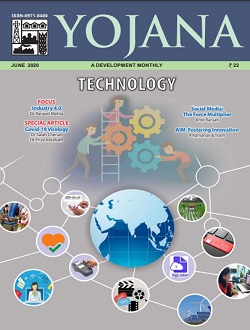

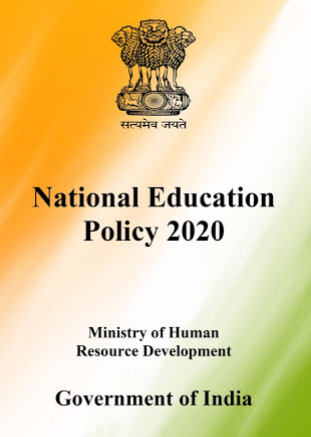 Higher Education:
Higher Education:



